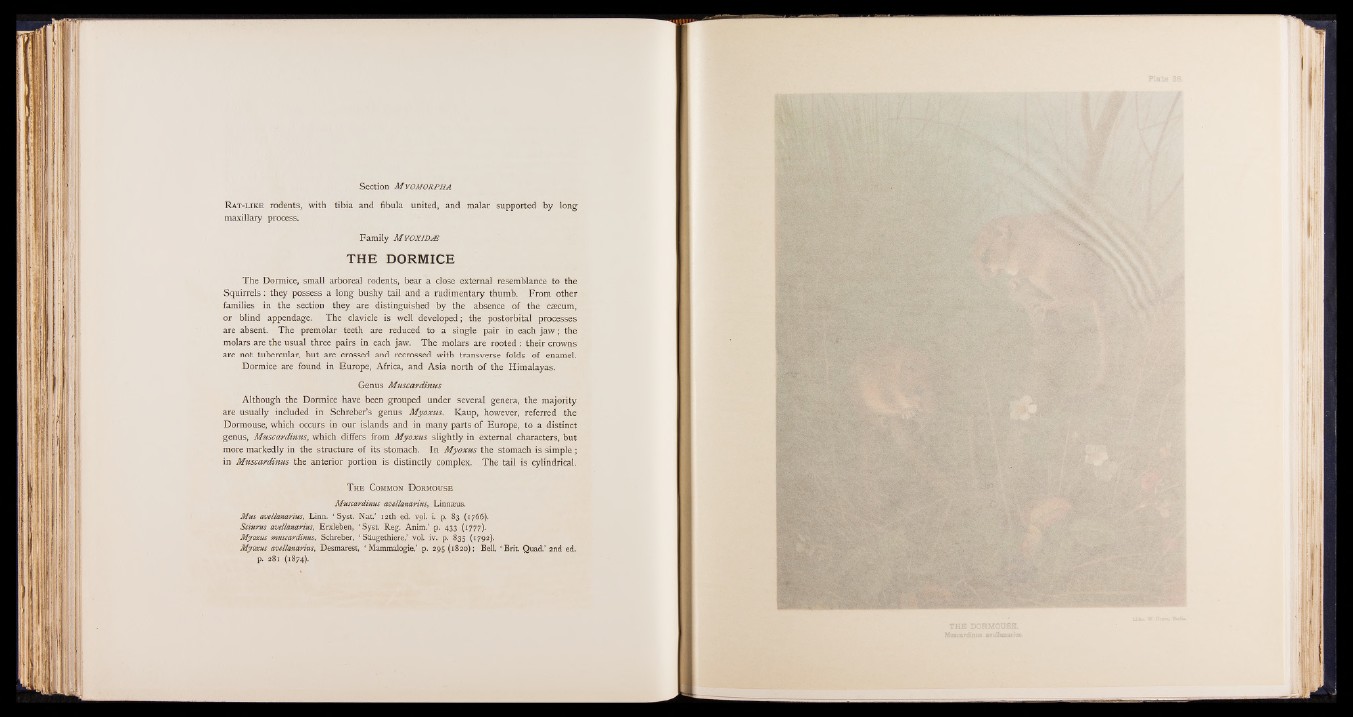
Section M yom o r ph a
R at-l ik e rodents, with tibia and fibula united, and malar supported by long
maxillary process.
Family M y o x id æ
THE DORMICE
The Dormice, small arboreal rodents, bear a close external resemblance to the
Squirrels : they possess a long bushy tail and a rudimentary thumb. From other
families in the section they are distinguished by the absence of the cæcum,
or blind appendage. The clavicle is well developed; the postorbital processes
are absent. The premolar teeth are reduced to a single pair in each jaw ; the
molars are the usual three pairs in each jaw. The molars are rooted : their crowns
are not tubercular, but are crossed and recrossed with transverse folds of enamel.
Dormice are found in Europe, Africa, and Asia north of the Himalayas.
Genus Muscardinus
Although the Dormice have been grouped under several genera, the majority
are usually included in Schreber’s genus Myoxus. Kaup, however, referred the
Dormouse, which occurs in our islands and in many parts of Europe, to a distinct
genus, Muscardinus, which differs from Myoxus slightly in external characters, but
more markedly in the structure of its stomach. In Myoxus the stomach is simple ;
in Muscardinus the anterior portion is distinctly complex. The tail is cylindrical.
T he Common Dormouse
Muscardinus avellanarius, Linnæus.
Mus avellanarius, Linn. ‘ Syst. Nat.’ 12th ed. vol. i. p. 83 (1766).
Sciurus avellanarius, Erxleben, ‘ Syst. Reg. Anim.’ p. 433 (1777).
Myoxus muscardinus, Schreber, ‘ Sâugethiere,’ vol. iv. p. 835 (1792).
Myoxus avellanarius, Desmarest, ‘ Mammalogie,’ p. 295 (1820) ; Bell, ‘ Brit Quad.’ 2nd ed.
p. 281 (1874).